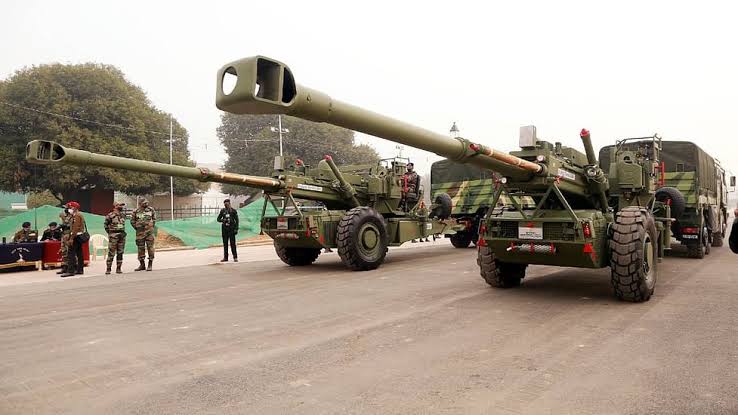Dhanush Guns Finally Ready For Induction

There were repeated incidents of muzzle break hits during firing of six Dhanush guns handed over to the Army. This had delayed the artillery modernisation program and further operationalization. The muzzle break hit occurs when the shell damages the front end of the barrel when fired instead of passing through it cleanly.
For over ten years, the Army patiently hand-held the efforts of the Gun Carriage Factory to further develop the artillery gun. Three years after the Dhanush artillery gun was handed over to the Indian Army, the Indian-made follow-on of the Swedish Bofors 155 mm howitzer has finally cleared the firing tests at Pokhran on March 8 after firing around 90 rounds. This now will lead to the formal induction of the first indigenous 155 mm gun into the Artillery.
“Reliability Firing (2 Second line firing) of Dhanush Gun completed today at Pokhran Field Firing Range successfully. 2 guns fired 90 rounds each (including 35 rounds with Zone 6) flawlessly. All decks cleared for formal induction,” acknowledged Additional Secretary Defence Production Sanjay Jaju.
The first lot of 6 Dhanush guns were handed over to the Army in 2019. Subsequently, 11 more guns were delivered. However the induction was stalled by the recurring problem of muzzle hits.
Dhanush has been developed on the basis of transfer of technology (ToT) documents provided by Bofors along with the 1986 deal, which had remained unactioned due to the controversy. In 2010, the erstwhile Ordnance Factory Board (OFB) decided to develop a follow-on version of the FH-77 Bofors gun using the know-how from the ToT documents and using its experience of up-gunning older artillery guns.
The Dhanush has a longer strike range of 38 km and 45 calibre as compared to 27 km of the old Bofors, which had a 155 mm 39 calibre barrel. There is a modified double baffle muzzle brake (MDBMB) system also to limit the stress on the structure to 155/39 levels. A design flaw which was resulting in muzzle hits has now been rectified, and its reliability validated through the second round of reliability tests.
The rate of fire is stated to be 3 rounds in 15 seconds for bursts, 15 rounds in 3 minutes for intense firing and 45 rounds in one hour for sustained firing. The weight of the Dhanush is 13 tons, which is 700 kg more than that of Bofors FH-77. The barrel is 877 mm longer. Over 5,500 rounds are reported to have been fired from this gun in various rounds of trials.
Besides longer range, the Gun Carriage Factory claims superiority of the Dhanush over the Bofors on many other counts. Among the new features is an auto laying system based on the Fire Control Computer System as compared to the manual system of the old Bofors Gun. The gun has an Advanced Gun Sighting System with a day camera (CCD), night camera, laser range finder (LRF) and NFOV and WFOV, officials explained. Bofors only has optical day and night sight.
Dhanush also has an on-board Advanced Tactical Computer for targeting. For the Bofors FH-77, ballistic calculations had to be done at the command post. It also has an Inertial Navigation System (INS) and GPS for guidance.



